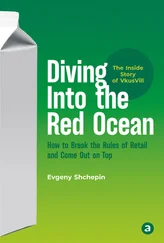Joseph J. Torres - Life in the Open Ocean
Здесь есть возможность читать онлайн «Joseph J. Torres - Life in the Open Ocean» — ознакомительный отрывок электронной книги совершенно бесплатно, а после прочтения отрывка купить полную версию. В некоторых случаях можно слушать аудио, скачать через торрент в формате fb2 и присутствует краткое содержание. Жанр: unrecognised, на английском языке. Описание произведения, (предисловие) а так же отзывы посетителей доступны на портале библиотеки ЛибКат.
- Название:Life in the Open Ocean
- Автор:
- Жанр:
- Год:неизвестен
- ISBN:нет данных
- Рейтинг книги:5 / 5. Голосов: 1
-
Избранное:Добавить в избранное
- Отзывы:
-
Ваша оценка:
- 100
- 1
- 2
- 3
- 4
- 5
Life in the Open Ocean: краткое содержание, описание и аннотация
Предлагаем к чтению аннотацию, описание, краткое содержание или предисловие (зависит от того, что написал сам автор книги «Life in the Open Ocean»). Если вы не нашли необходимую информацию о книге — напишите в комментариях, мы постараемся отыскать её.
Life in the Open Ocean: The Biology of Pelagic Species
Life in the Open Ocean: The Biology of Pelagic Species
Life in the Open Ocean — читать онлайн ознакомительный отрывок
Ниже представлен текст книги, разбитый по страницам. Система сохранения места последней прочитанной страницы, позволяет с удобством читать онлайн бесплатно книгу «Life in the Open Ocean», без необходимости каждый раз заново искать на чём Вы остановились. Поставьте закладку, и сможете в любой момент перейти на страницу, на которой закончили чтение.
Интервал:
Закладка:
Fishes replenish the water they lose through their excretory system and the ions they gain through their skin by drinking seawater! Water is extracted as it passes along the fish’s gut, along with some ions, but the great majority of the ions are allowed to pass right through. The excess ions that are taken up by the gut and that diffuse inward are excreted at the gills using cells specific for that purpose. Ironically, despite the fact that the blood–seawater barrier is thinnest at the gills, no unwanted ions are taken up there due to the tight‐junctions in the cells of the respiratory epithelium. The ion‐balancing act of bony fishes is portrayed in Figure 2.25.
The third osmoregulatory strategy exhibited by marine species is shown by the elasmobranchs: the sharks, skates, and rays. It is also employed by the ratfishes (chimaeras) and the ancient lobe‐finned fish, the coelacanth. Admittedly, only a very few representatives of those groups are the “small swimmers” that are the focus of this book, but their water‐balancing strategy is an important one in the marine system and is included here for completeness.
The third strategy is much like a combination of those used by the invertebrates and the teleosts. The internal salt concentration of the sharks and their kin is about half that of seawater, similar to that of the bony fishes. However, the difference in osmotic concentration between seawater and shark blood is made up by organic osmolytes: urea and trimethyl amine oxide, or TMAO ( Figure 2.26). In fact, sharks and kin are slightly hyperosmotic to seawater; that is, they are at a slightly higher ionic concentration than seawater due to the urea and TMAO, which means that water tends to flow in! Urea and TMAO naturally tend to flow out, so the integument of the cartilaginous fishes is highly impermeable to their loss. In addition to using the same mechanisms employed by the bony fishes, i.e. excretion of ions at the gills, elasmobranchs have a rectal gland that can secrete a highly concentrated salt solution to aid in maintaining salt balance.
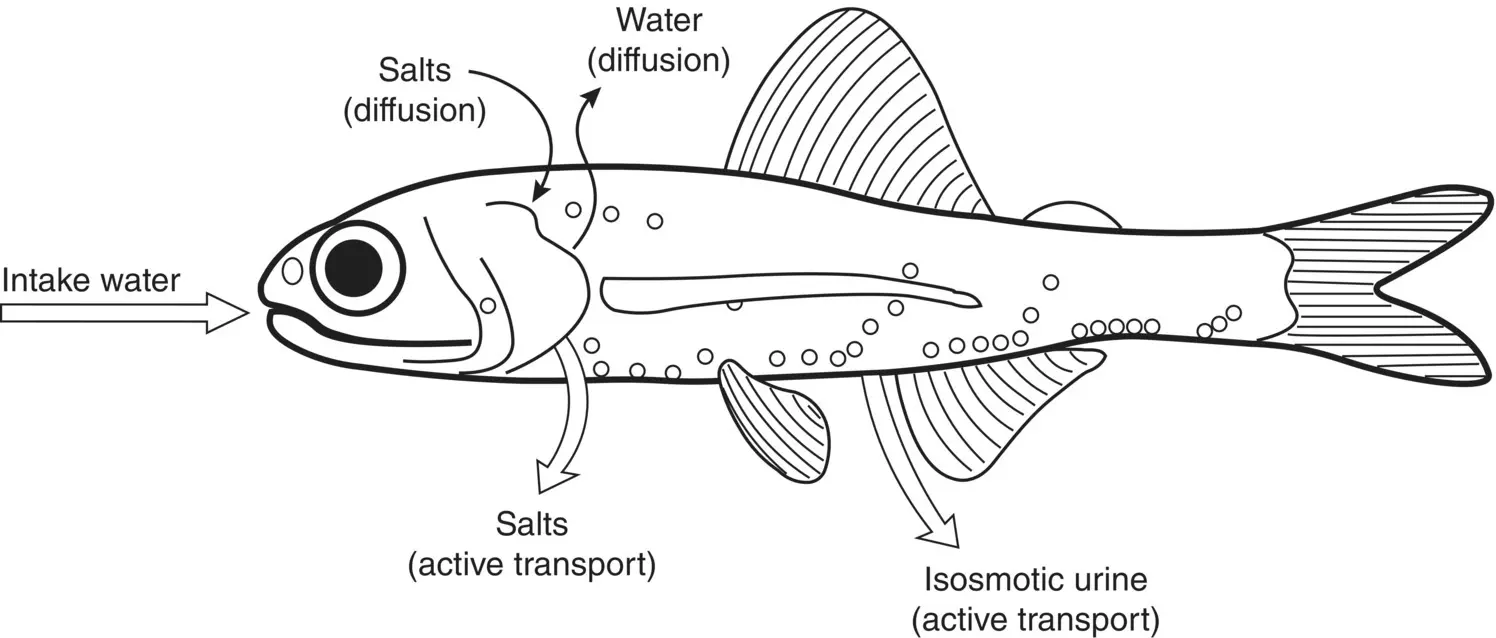
Figure 2.25 Osmoregulation in teleosts. Balance of water and ion concentration in the body of marine fishes through the processes of diffusion and active transport.
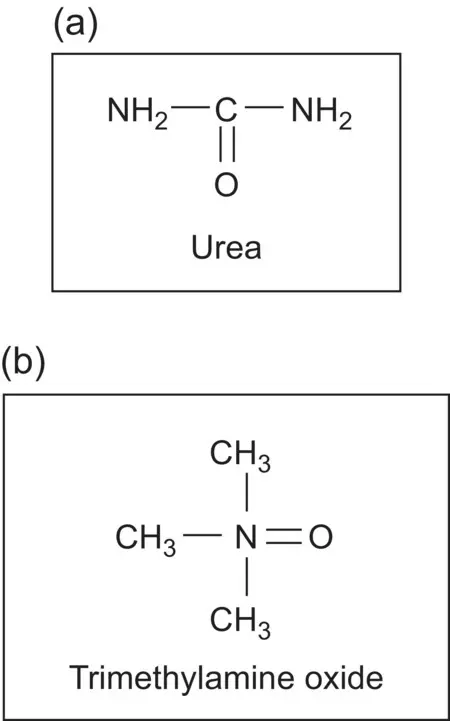
Figure 2.26 Osmoregulation in elasmobranchs. The osmolytes urea (a) and trimethylamine oxide (b) used by cartilaginous fishes to regulate osmotic balance in the blood.
Depth
By now you may be growing to appreciate the profound changes in the physical environment of the open ocean in the horizontal and vertical planes and their effects on the physiology of open‐ocean fauna. Deeper‐living species must accommodate the colder temperatures, higher pressures, lower light levels, and, sometimes, lower oxygen levels of the mid‐depths within their suite of adapted characters. A fascinating consequence of the changing environment with depth is the metabolic response of many deep‐living species to the change: metabolic rate declines precipitously with species’ depth of occurrence. It far exceeds that which would be predicted by the changes in the physical environment alone.
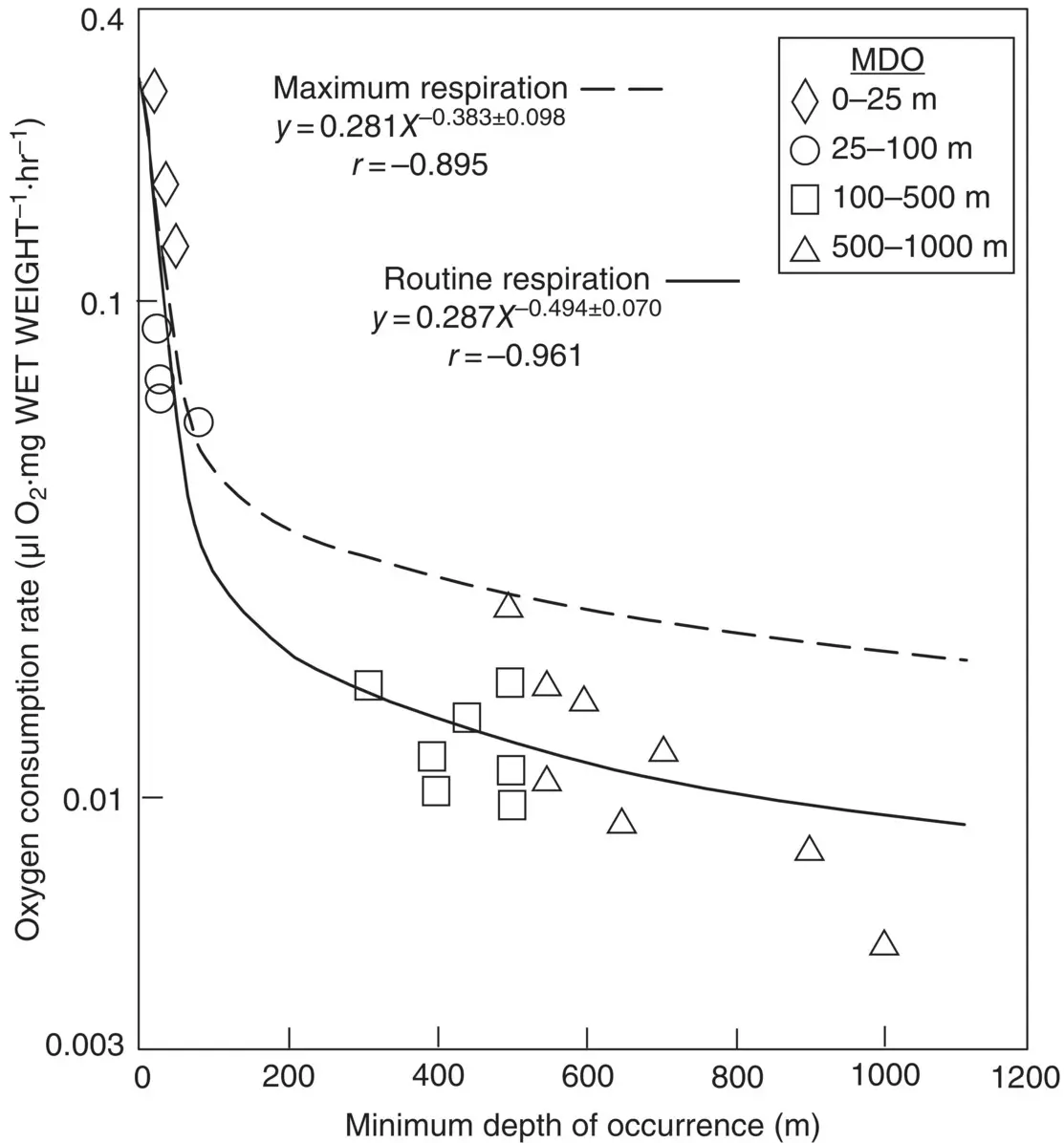
Figure 2.27 Relationship between routine respiration (solid line) and maximum respiration (dashed line) for groups of fishes with different minimum depths of occurrence.
Source: Adapted from Torres et al. (1979), figure 1 (p. 190). Reproduced with the permission of Elsevier.
Childress (1971) was the first to report an unusually large decline in metabolism with depth in micronektonic species inhabiting the upper 1300 m of the water column off the coast of California, a cold temperate system. He found that species living at depths between 900 and 1300 m had a metabolic rate about 10% of those living in the upper 400 m when measured at the same temperature. The work suggested fundamental differences in the metabolic characteristics of the fauna living in different depth strata.
Nearly forty years later, with investigations spanning the Atlantic, Pacific, Gulf of California, Gulf of Mexico, and Southern Ocean, and using a wide variety of different taxa, the trend has been found to be universal among many taxa. We now know a lot more about the decline in metabolism with depth, and a well‐accepted theory of why it occurs has been established.
The first taxa to be studied in detail for trends in metabolism vs. depth were the mesopelagic crustaceans (Childress 1975) and fishes (Torres et al. 1979, Figure 2.27) off the coast of California. In both cases, the difference in metabolism between a species living in surface waters and one living at 1000 m greatly exceeded that which would be caused by temperature alone. Depending on the time of year, the difference in temperature between surface waters (about 15 °C in fall) and those at 1000 m (about 4 °C year‐round) would yield an expected change of roughly three‐fold, assuming a conventional Q 10of 2–3. That is, metabolism at depth would be about one‐third of that in surface waters if due only to changes in temperature. Instead the change was about 50‐fold in both crustaceans and fishes! A fish dwelling at 1000 m had a metabolic rate about 2% of that of a surface‐dwelling species. The difference in metabolism between a surface‐ and deep‐dwelling fish (or crustacean) is huge, akin to the difference in metabolism between an active fish and a jellyfish (Seibel and Drazen 2007).
The fact that both pelagic crustaceans and fishes exhibited profound depth‐related declines in metabolism confirmed that the trend was real and not confined to one taxonomic group. The results in turn opened up a Pandora’s Box of questions. Why the decline occurs and how it is biologically achieved spring to mind as appropriate queries. In addition, one might wonder how widespread among oceanic taxa the decline is and whether it only occurs among pelagic species or whether it is also observed in bottom‐dwelling (benthic) species and species that swim just above the bottom, the benthopelagic species. Enough work has been done to answer many of those questions. It is an instructive journey through the literature to see the questions posed and answered and the explanations for the phenomenon evolve.
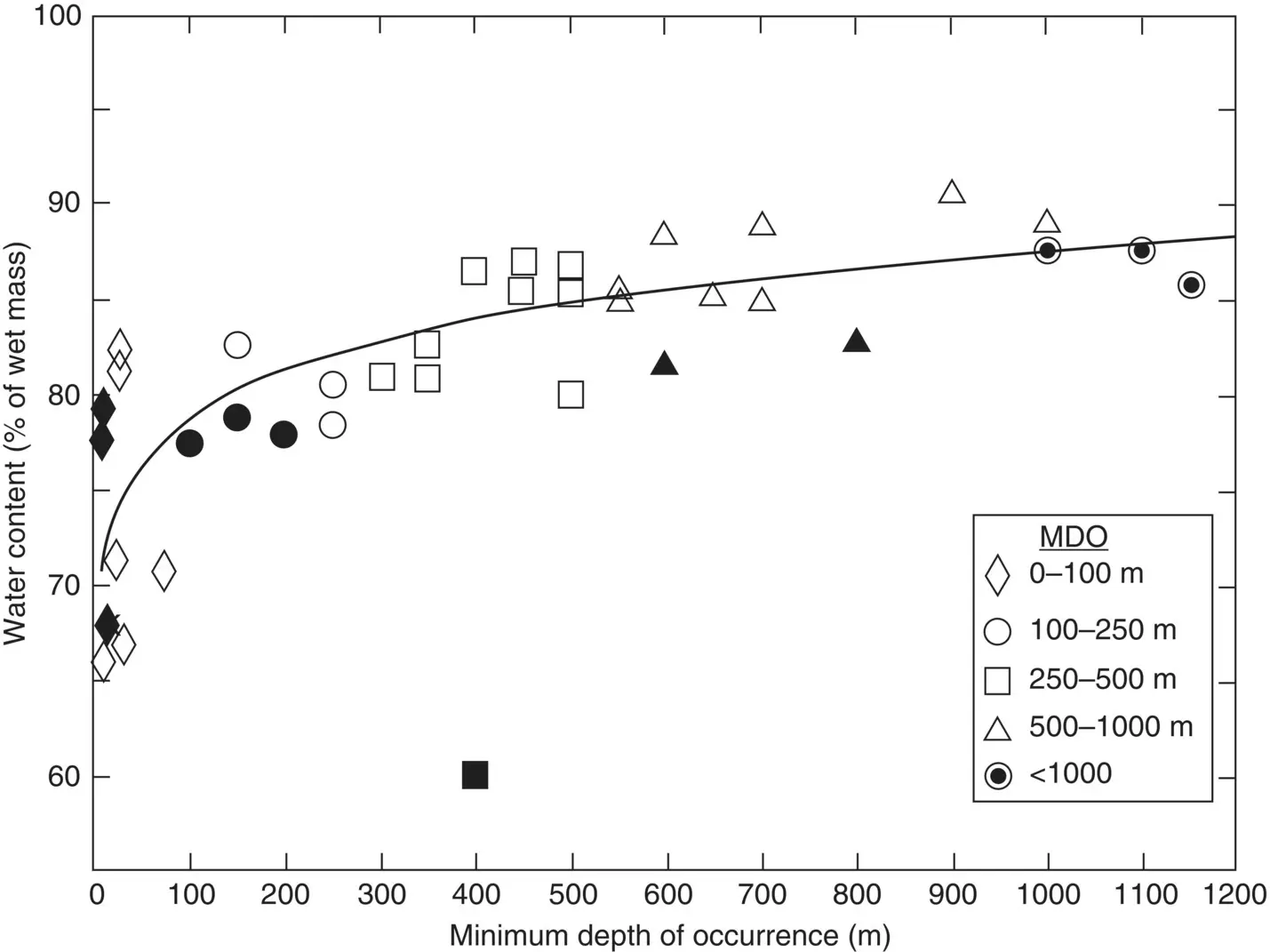
Figure 2.28 The relationship between water content and minimum depth of occurrence in a group of midwater fishes. Filled symbols represent species which have well‐developed gas‐filled swimbladders. The regression line of water content as a function of depth is for fishes without well‐developed gas bladders.
Source: Adapted from Childress and Nygaard (1973), figure 1 (p. 1098). Reproduced with the permission of Elsevier.
The first question, why the decline occurs, has been answered in two different ways over the years. Initially, we thought that declining metabolism was a response to the lower food availability at depth. The less energy required for the tasks of daily metabolism such as swimming, circulation of blood, and maintaining a constant internal environment, the more energy that could be devoted to growing bigger faster. The “energy limitation” hypothesis was very attractive, made more so by the fact that a large fraction of the metabolic decline was achieved through a reduction in metabolizing tissue: pelagic crustaceans and fishes become more watery with depth ( Figure 2.28). The higher the water content of an individual, the lower its protein content, and because muscle is largely protein, it follows that deeper‐living species have less muscle. Since muscle commands the lion’s share of the energy produced by daily metabolism in most swimming species, watery, deeper‐living crustaceans and fishes naturally have a much reduced metabolism. Curiously, the reduction in metabolism cannot be explained by an increased water content alone, it is far too great. Not only is there less muscle, the muscle itself has a greatly reduced metabolic demand.
Читать дальшеИнтервал:
Закладка:
Похожие книги на «Life in the Open Ocean»
Представляем Вашему вниманию похожие книги на «Life in the Open Ocean» списком для выбора. Мы отобрали схожую по названию и смыслу литературу в надежде предоставить читателям больше вариантов отыскать новые, интересные, ещё непрочитанные произведения.
Обсуждение, отзывы о книге «Life in the Open Ocean» и просто собственные мнения читателей. Оставьте ваши комментарии, напишите, что Вы думаете о произведении, его смысле или главных героях. Укажите что конкретно понравилось, а что нет, и почему Вы так считаете.






